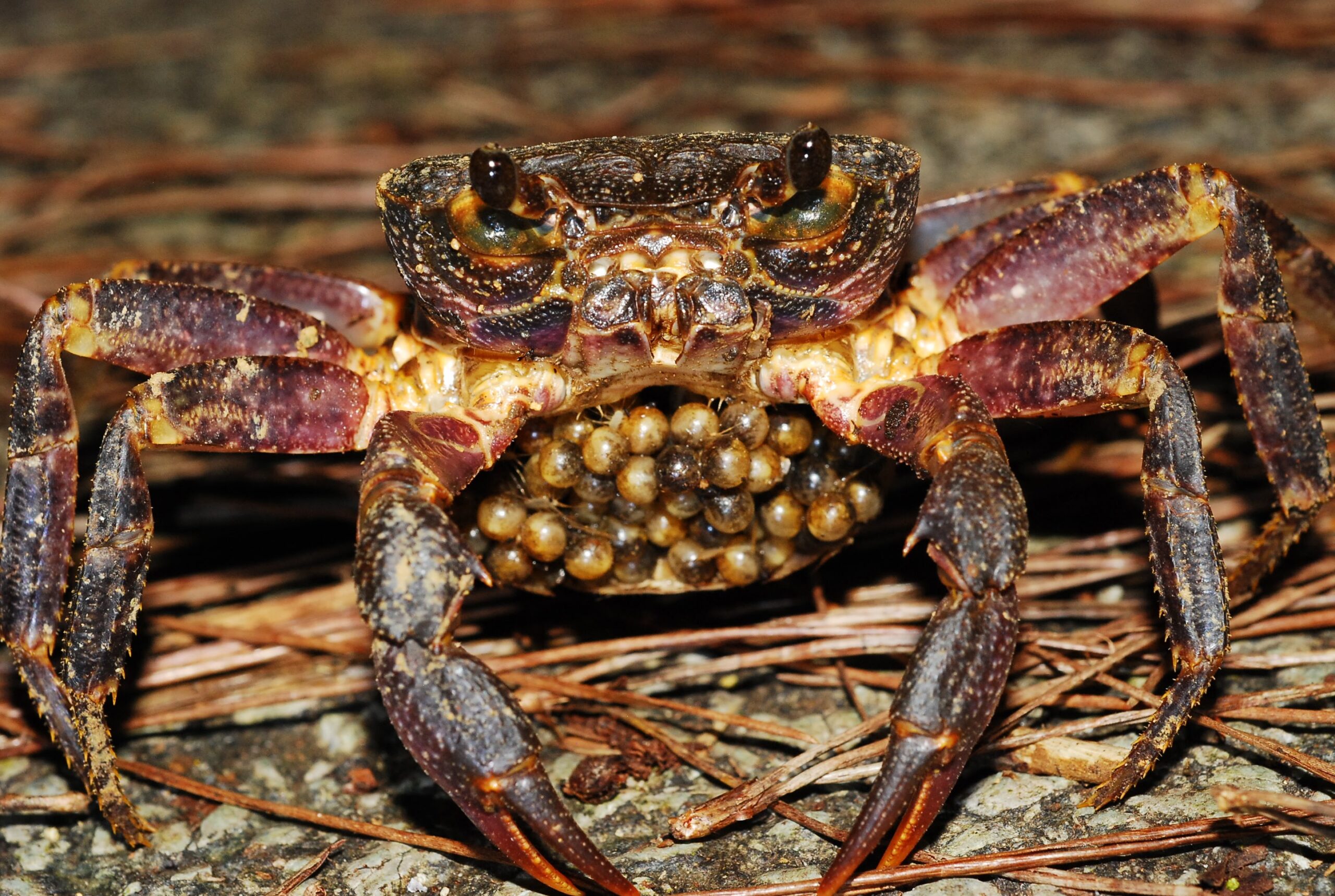Candidiopotamon okinawense
Japanese name: オキナワミナミザワガニ
Chinese name: 沖繩明溪蟹
English name: Okinawa Candidiopotamon Freshwater Crab
Origin: Endemic to Okinawajima
The genus Candidiopotamon is found only in Taiwan and parts of the Central Ryukyus. Five species are currently known, three in Okinawa Prefecture and two in Taiwan:
- Candidiopotamon kumejimense – found on Kumejima
- Candidiopotamon okinawense – found on Okinawajima
- Candidiopotamon tokashikense – found on Tokashikijima
- Candidiopotamon rathbuni – found in western Taiwan
- Candidiopotamon penglai – found in eastern Taiwan
Candidiopotamon okinawense, the species found on Okinawajima, is known for its aggressive behavior. It has been observed preying on various frogs and even other freshwater crabs. Like members of the genus Geothelphusa, this species completes its entire life cycle on land without returning to the sea. It lays a small number of relatively large eggs, which are protected by the mother.
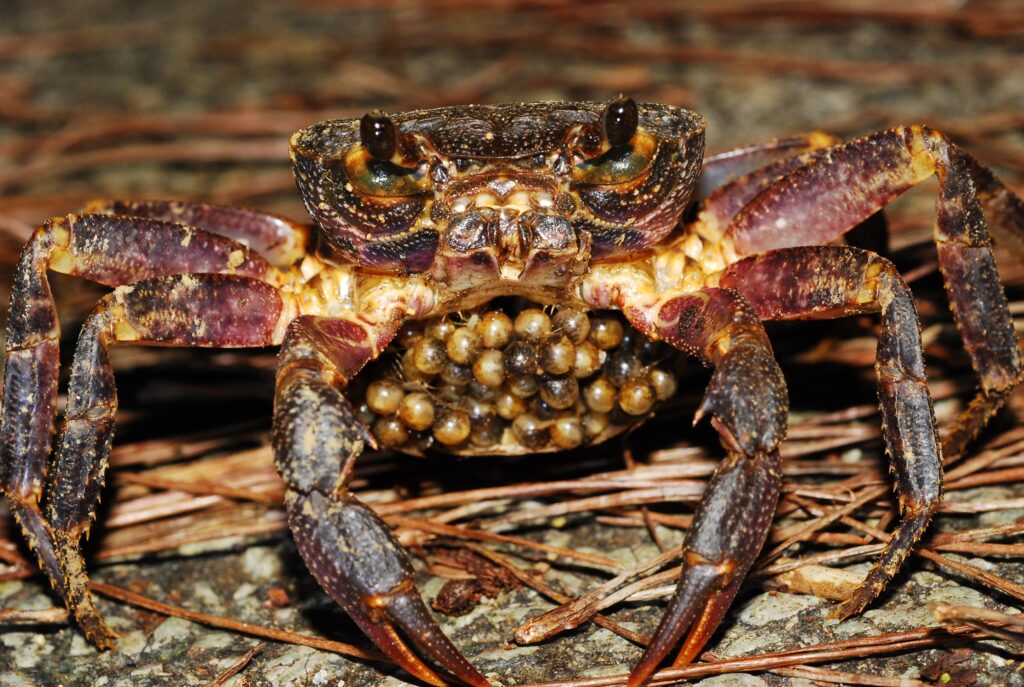
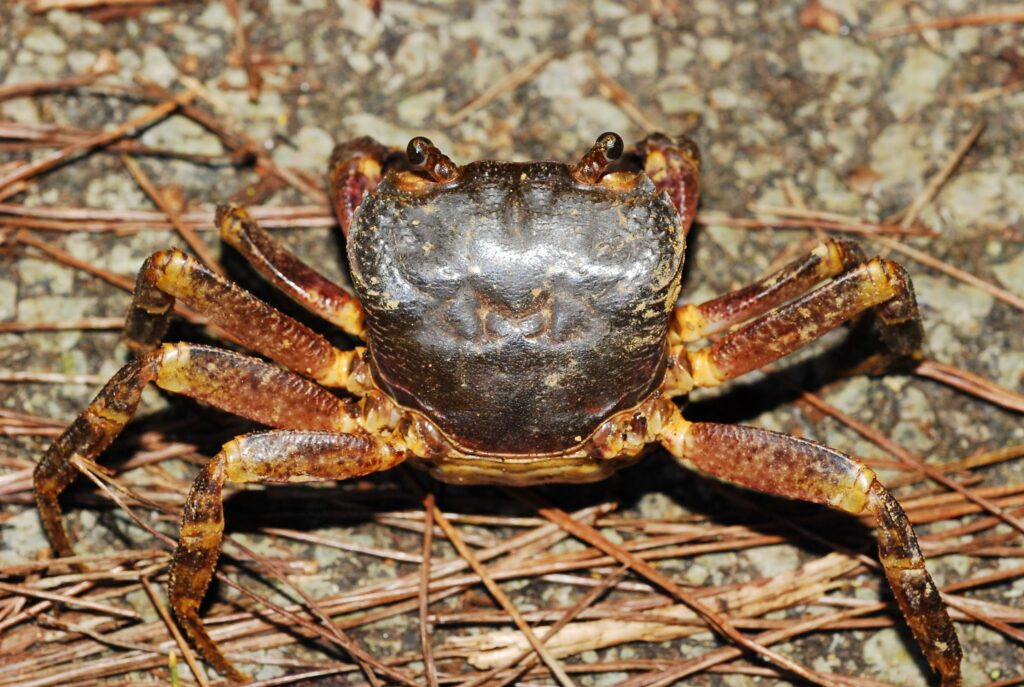
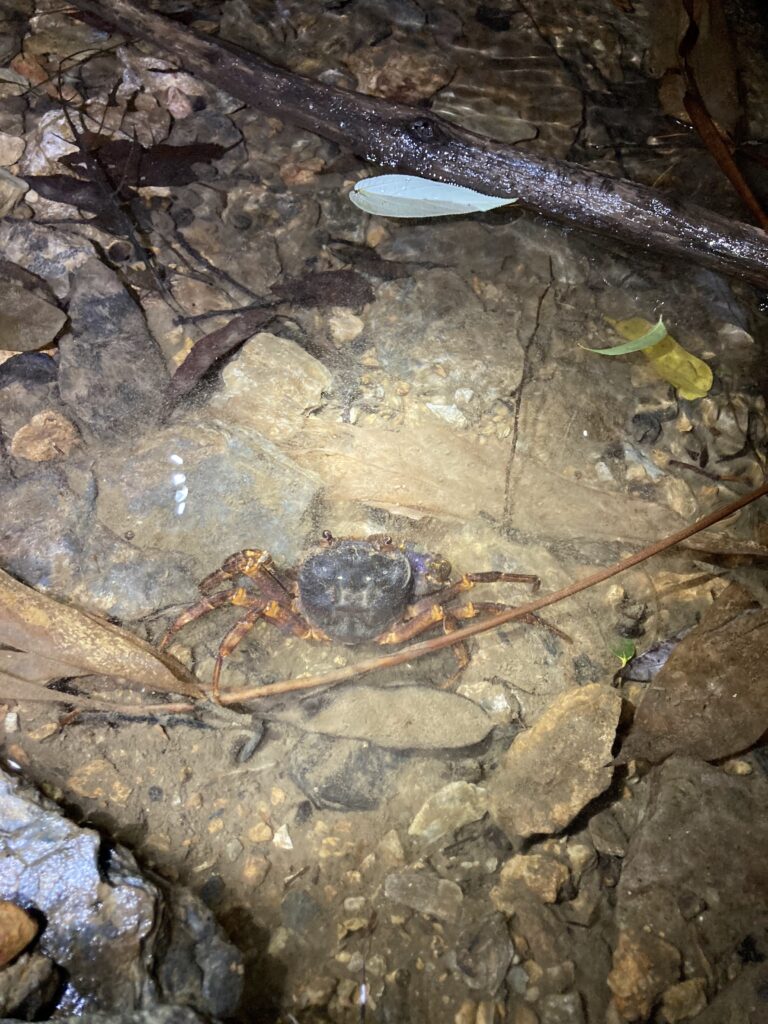
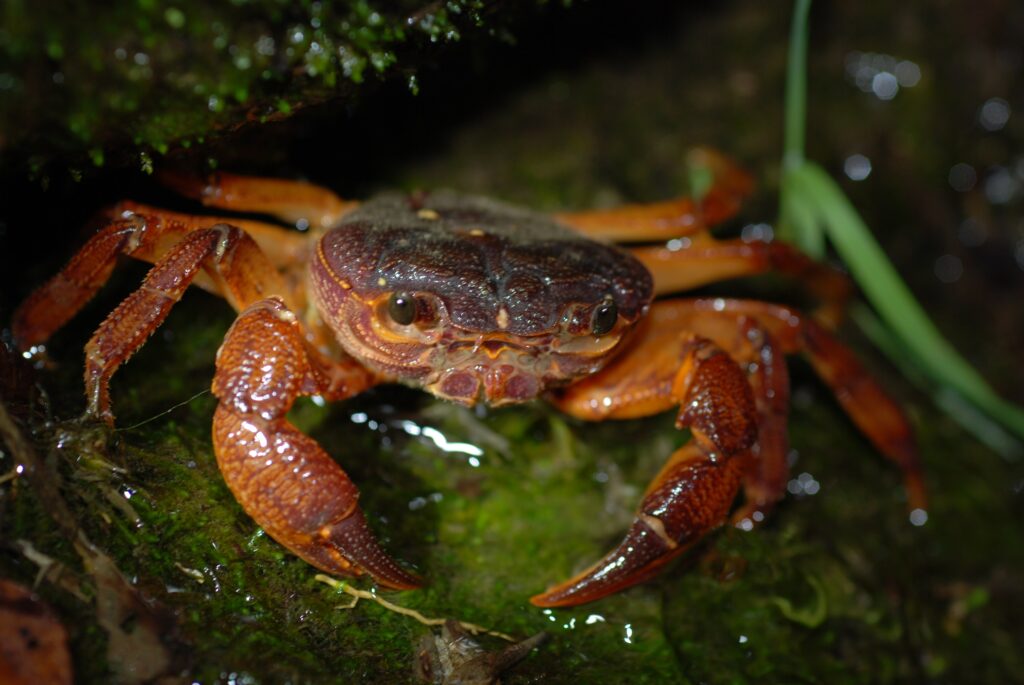
The genus name Candidiopotamon has a deep connection to Taiwan. Candidiopotamon rathbuni, described in 1914, was the first crab species recorded with Taiwan as its type locality. It was once referred to as the “Qingxi crab” (清溪蟹), but the genus name actually derives from “Candidius Lake,” the old name of Sun Moon Lake. The name “Qingxi” was the result of a mistranslation by Chinese researchers.
So what is “Candidius Lake”? This name honors George Candidius, a Dutch missionary who came to Taiwan in 1627 and documented the customs of the indigenous Siraya people. In 1873, Reverend William Campbell, who later traveled to Taiwan, named Sun Moon Lake (日月潭) as “Lake Candidius” in recognition of his predecessor.
The Chinese name 明溪蟹 (Mingxi crab) uses the character 明, which combines the characters for “sun” (日) and “moon” (月), reflecting a clever use of Chinese etymology.
